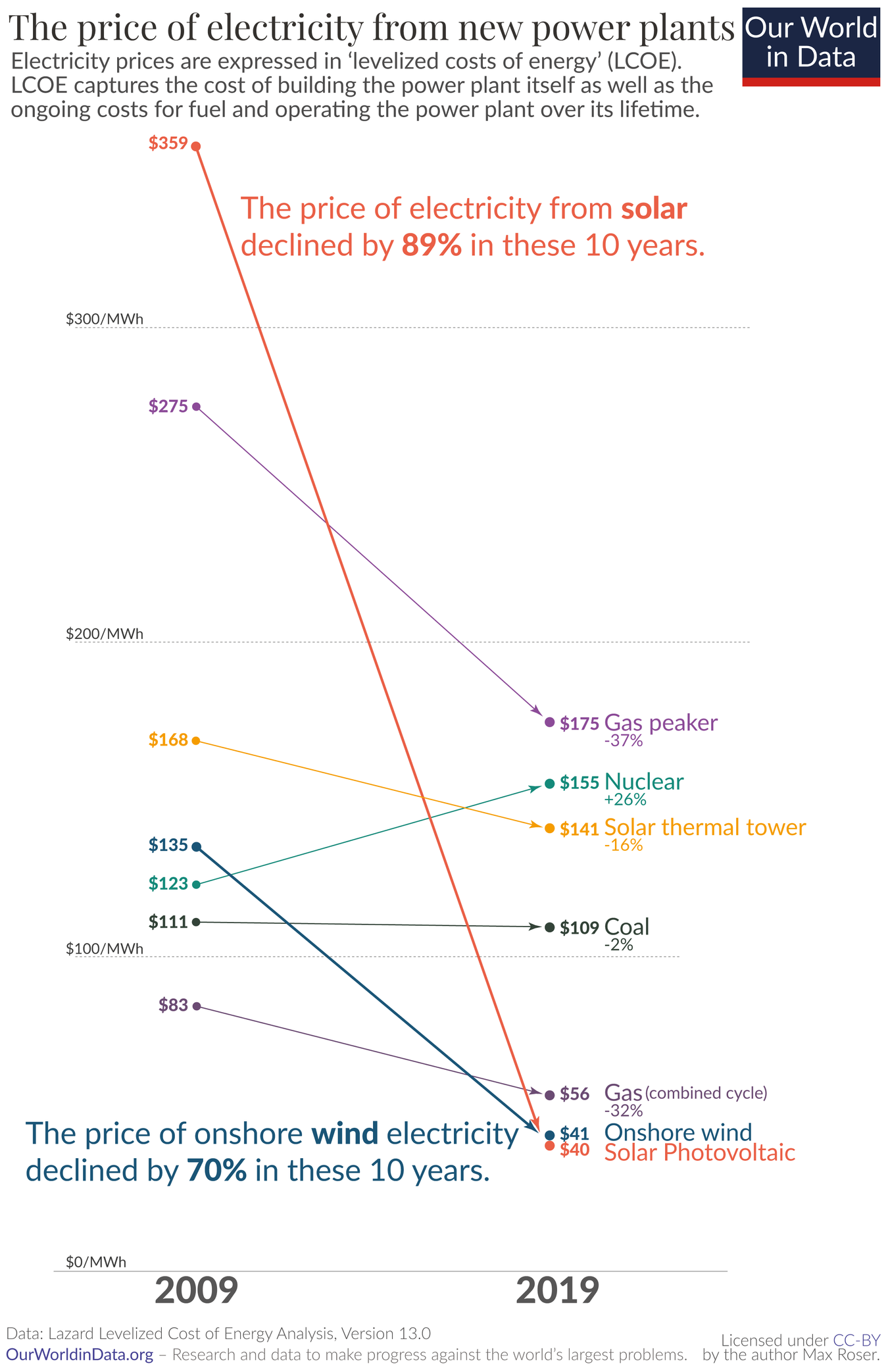Technology
This is the official technology community of Lemmy.ml for all news related to creation and use of technology, and to facilitate civil, meaningful discussion around it.
Ask in DM before posting product reviews or ads. All such posts otherwise are subject to removal.
Rules:
1: All Lemmy rules apply
2: Do not post low effort posts
3: NEVER post naziped*gore stuff
4: Always post article URLs or their archived version URLs as sources, NOT screenshots. Help the blind users.
5: personal rants of Big Tech CEOs like Elon Musk are unwelcome (does not include posts about their companies affecting wide range of people)
6: no advertisement posts unless verified as legitimate and non-exploitative/non-consumerist
7: crypto related posts, unless essential, are disallowed
view the rest of the comments

Gas skyrocketed in Europe. Oil is going yo-yo. How does this have no impact on the price?
The graph is talking about LCOE. I am talking about LCOE. The other comments are talking about LCOE. You are talking about spot price on input goods. One of us here is talking about something different.
https://www.sciencedirect.com/topics/engineering/levelized-cost-of-electricity#:~:text=Levelized%20Cost%20of%20Electricity%20(LCOE)%20is%20an%20economic%20measure%20used,electricity%20across%20various%20generation%20technologies.
Levelized Cost of Electricity
Levelized Cost of Electricity (LCOE) is an economic measure used to compare the lifetime costs of generating electricity across various generation technologies. The lifetime costs for generation can be categorized into the following groups: • Capital Costs: up-front costs to construct a power plant • Operation and Maintenance (O&M) Costs: costs incurred to run a power plant. These costs can be sub-categorized into fixed and variable costs. Fixed O&M costs are incurred regardless of the plant generating electricity; they are comprised of personnel salaries, security costs, insurance, etc. Variable O&M costs are directly linked to the generation of the power project. Fuel costs for conventional plants also vary with output. • Disposition Costs: costs typically incurred at the end of the useful life. The disposition costs for certain generation technologies, such as nuclear power plants, can be huge. In most of the instances, the disposition costs for the solar and generation projects are assumed to be zero because the scrap value of the equipment generally should cover the cost of removal.
As shown in the examples below, financing costs are internalized in the LCOE calculation. The LCOE methodology also considers various tax benefits, including depreciation that may provide a tax shield. LCOE is a useful tool as it allows comparison of various generation technologies with different capital costs, O&M costs, useful life, etc. LCOE can be viewed from an economic perspective as an “average” electricity price that must be earned by a specific generation source to break even. LCOEs are used as a relative scale to compare various technologies rather than an absolute measure informing investment decisions. Actual system planning must also consider reliability issues (such as availability at periods of peak demand) as well as other factors. Accordingly, LCOE is primarily used by policymakers for long-term planning, as well as devising incentive mechanisms. Developers and independent power producers may use the metric as a broad planning tool to compare the attractiveness of various generation technologies. Finally, investors are interested in LCOEs to understand long-term economic trends, especially for renewables, for which the decrease in cost has greatly improved their competitiveness.